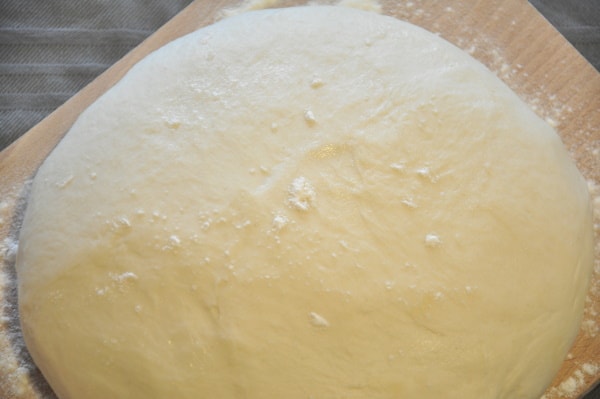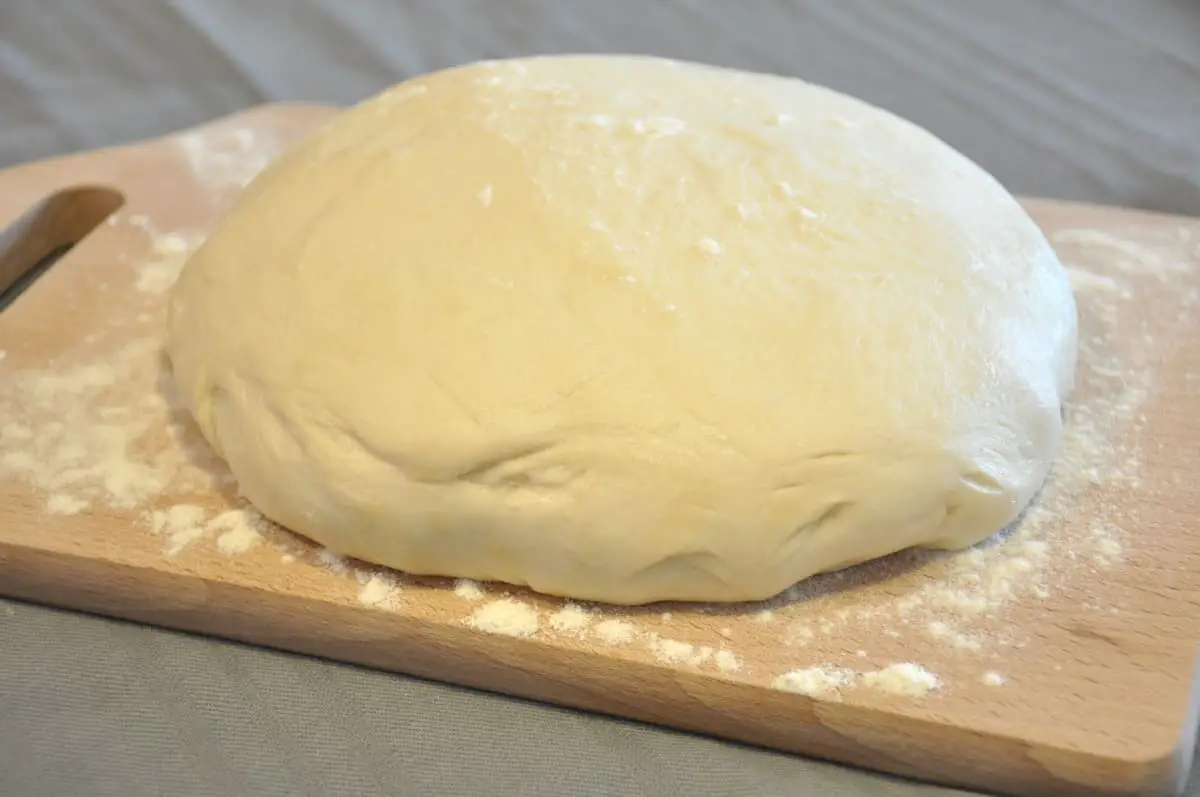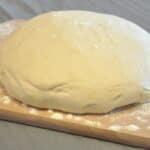Phyllo, an unleavened dough, is used in making pastries. It is a popular ingredient in Middle Eastern and Balkan cuisines. The dough is made by a special technique of kneading and stretching, which makes the dough elastic. This elasticity allows the stretching of dought to paper-thin sheets.
There are two key things that make phyllo dough super elastic. The first one is to knead it the right way with pressing and pulling motion for at least 15 minutes. The second one is putting an appropriate amount of melted butter or oil on the rolled sheet. This will help the final product maintain its elasticity.
The secret of super elastic phyllo dough

- Use the right flour for the dough
Using hard flour from the mill might be best, but you can also use bread flour that is higher in gluten.
The dough owes its ability to stretch to the gluten network that holds the dough together. It is this network that gives dough its elasticity. When water and gluten come together, a network of long, disorganized, knotted gluten threads is formed. The more gluten there is, the more elastic, firm, and stretchy the dough is.
- Knead the dough the right way
Kneading phyllo dough is not the same as kneading bread dough. The best way to knead. The best way to knead it is to press and pull with your hand against the counter. Repeat the process for 20 minutes and rest the dough for an hour on room temp.
- applying oil or butter
After the dough has its rest, it’s time to roll it. You should roll the dough into a small circle. Apply oil or melted butter on top of the sheet and let it rest for at least 15 minutes after the oil is applied. Fat will help with elasticity, and when you stretch it, the dough won’t tear as much if you stretch it too thin.
Taking these steps into consideration when making phyllo dough will make the dough super elastic and allow you to stretch it to translucent.
Can you over-knead phyllo dough
Making dough can be a challenge for some. Kneading the dough is a requirement to give it strength and structure.
Gliadin and glutenin, found in wheat flour, combine to form gluten. When the bread dough is mixed, the proteins form knots.
Kneading the dough is important because it aligns these protein fibers. The strung fibers form large chains of amino acids. When leavening agents are used, the dough traps the gas from the yeast, causing the dough to rise.
However, if the dough is kneaded too much, it becomes difficult to stretch. Overkneaded dough makes tough and chewy pizza crust and bread.
Also, over kneading makes the dough stiff and dense. This dough is more prone to ripping than stretching.
You can assess if the amount of kneading is sufficient when the dough is smooth and springs back. Proper kneading will result in a stretchable, elastic dough that traps gas bubbles inside.
How to knead phyllo dough to get it more elastic and stretchy
Start by mixing the ingredients in a bowl. When ingredients are combined, transfer everything on a working surface. When a ball starts to form start with the kneading process. When kneading, use the following motion: press and pull with one hand and form the dough into a ball with the other hand with each press and pull. The easiest way to explain it is by showing it in this video:
How to stretch phyllo dough to paper-thin
Place the dough on the work surface after rolling it out and applying oil or melted butter. Gently pull the outer edges of the dough, working your way all the way around. Continue to stretch the dough by gently pulling on it. As the dough continues to stretch, place your hands, palms up, under the dough and stretch it by gently pulling outward until it is paper-thin and translucent. This video explains it well:
Why is my phyllo dough not elastic
The dough may not be elastic for several reasons. If the dough has been allowed to dry out too much, it will not be elastic.
The dough needs moisture to hold it together. If the dough does not have a sufficient amount of moisture, it will start to fall apart.
Also, if there is not enough gluten in the recipe, it may be less elastic. But, too much flour may make the dough crumbly.
Stretchy and elastic phyllo (filo) dough recipe
With this one, you will be able to stretch the dough translucent.
I use this recipe whenever I make Strudel, pastry, spanakopita, or any dish requiring phyllo pastry. The three most important things when you make this pastry are:
- Proper technique and time of kneading
- Resting the dough
- Spreading oil or melted butter before stretching
Ingredients
250g (8.8 oz) All-purpose flour (best is high gluten flour)
20g (1.5tbsp) vegetable oil
pinch of salt
1.5 dcl (0,63 cups=7,87 fl oz) water
Instructions
Step 1.
Put the flour into a mixing bowl. Add salt, oil, and water. Don’t add all the water at once; instead, add half of it and start mixing. Then after the ingredients begin to combine, which will happen in a few seconds, start to add the rest of it in 2 or 3 batches.
Step 2.
Once the ingredients form a ball, it’s time to transfer the dough onto a working surface. Flour the surface with some flour, transfer the dough and start kneading. I explained the kneading process above. Once the dough is smooth and stretchy, place it back into a mixing bowl and cover it with plastic wrap.
Step 3.
Rest the dough for at least 20 minutes. It would be best if you could rest it for an hour.
Step 4.
Take the dough out of the bowl and form more petite dough balls. The number of balls depends on what you will use the dough.
If you are making a strudel for a family of five, you don’t have to make the balls.
If you are making spanakopita or a dish that requires several phyllo pastry sheets, then it is best to make balls the size of your fist.
Either way, you can cut the stretch dough into desired sheet sizes.
Step 5
After making the balls, flour put a large pastry cloth on a working area and dust it with flour. Place the ball on the cloth and roll it into a circle.
Repeat the same with all balls.
Step 6.
Spread a thin layer of oil or melted butter onto a rolled dough. Only spread it on the top layer of the dough and not the bottom. The amount of oil depends on the size of the rolled dough, but be sure to apply a thin layer.
Rest the dough so the oil can be absorbed, which will make it super elastic.
Step 7.
Stretch the dough as much as you can by starting on the edges. Work your way around the dough and stretch it with every pull you make. You can check how to stretch this dough above in the video.
Stretchy and super elastic phyllo dough
Equipment
- mixing bowl
- pastry cloth
Ingredients
- 250 g (8.8 oz) All-purpose flour (best is high gluten flour)
- 20 g (1.5tbsp) vegetable oil
- 1 pinch salt
- 1,5 dcl (0,63 cups=7,87 fl oz) water


